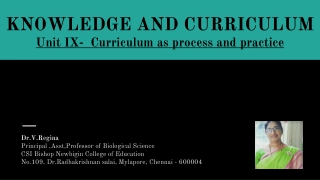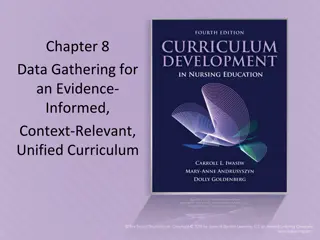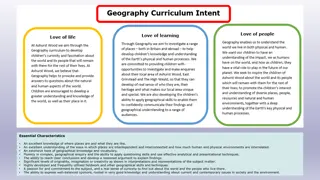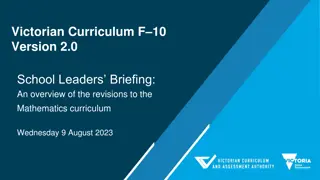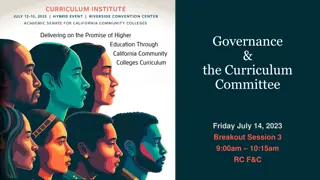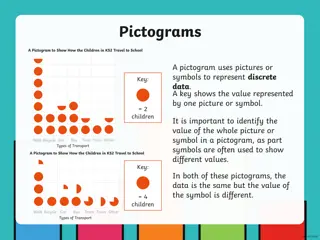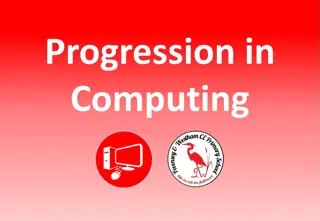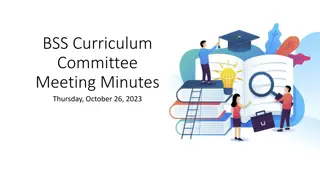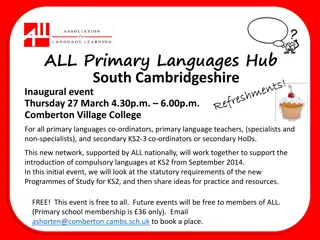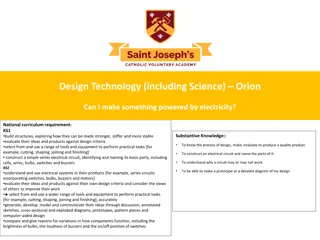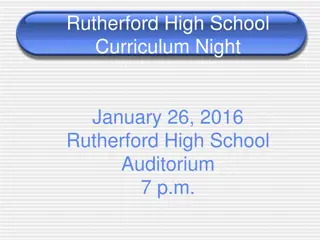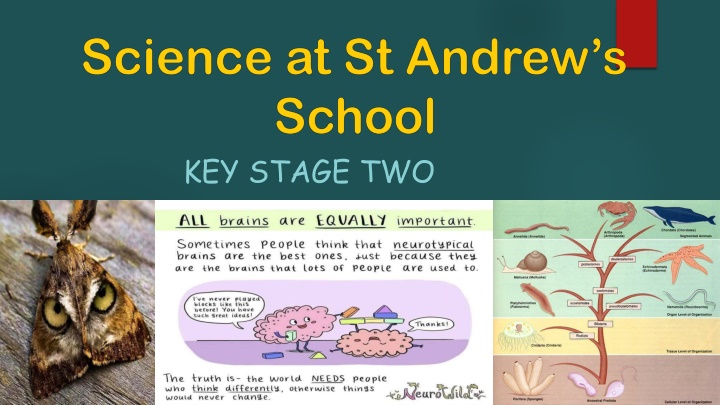
Exciting KS2 Science Units on Animals, Rocks, Forces, Light, Plants, and Scientists
Explore key Stage two science curriculum with engaging units on animals, rocks, forces, light, plants, and scientists. Learn about food groups, rocks, magnets, light, plants' life cycle, and famous scientists' discoveries. Develop a deeper understanding of the natural world through hands-on activities and investigations.
Download Presentation

Please find below an Image/Link to download the presentation.
The content on the website is provided AS IS for your information and personal use only. It may not be sold, licensed, or shared on other websites without obtaining consent from the author. If you encounter any issues during the download, it is possible that the publisher has removed the file from their server.
You are allowed to download the files provided on this website for personal or commercial use, subject to the condition that they are used lawfully. All files are the property of their respective owners.
The content on the website is provided AS IS for your information and personal use only. It may not be sold, licensed, or shared on other websites without obtaining consent from the author.
E N D
Presentation Transcript
KS2A Autumn 1 Unit: Animals, including humans Understand that animals cannot make their own food. Food groups and how they keep us healthy. Design meals based on what they learn. Comparing vertebrates that have skeletons and muscles for support, protection and movement and invertebrates. How different parts of the body have special functions.
KS2A Autumn 2 Unit: Rocks Comparing and grouping different rocks based on their appearance and simple physical properties. What happens when rocks are rubbed together? How are fossils formed? Recognise that soils are made from rocks and organic matter, identifying similarities and differences. Explore rocks and soils, including those in our local environment.
KS2A Spring 1 Unit: Forces & magnets Friction and comparing how things move on different surfaces. Contact forces like a physical hands-on push or pull. Non-contact forces such as magnetic or gravitational forces that can push or pull at a distance. Magnets have 2 poles and these can attract or repel each other and attract some materials and not others.
KS2A Spring 2 Unit: Light The need for light to see things and that dark is the absence of light. Notice that light is reflected from surfaces. Recognise that light from the sun can be dangerous and that there are ways to protect their eyes. Recognise that shadows are formed when the light from a light source is blocked by an opaque object. Find patterns in the way that the size of shadows change.
KS2A Summer 1 Unit: Plants Looking at different parts of flowering plants: roots, stem/trunk, leaves and flowers. Plants needs for life: growth (air, light, water, nutrients from soil, and room to grow) and how they vary from plant to plant. Look at how water is transported within plants. The life cycle of flowering plants, including pollination, seed formation and dispersal.
KS2A Summer 2 Unit: Scientists and inventors Identify inventions and discoveries from all over the world linked to scientific ideas. Marie Curie s - X-rays. George Washington Carver - to grow crops. William Smith s principle of fossil succession. Inge Lehmann s discovery of the Earth s solid core and the creation of igneous rocks. Looking at concave and convex mirrors. Exploring electromagnets. Making predictions and conclusions.
KS2B Autumn 1 Unit: Forces Force of gravity between Earth and falling object. Air & Water resistance, are forms of friction. Friction between moving surfaces. How pulleys can be used to make a small force lift lighter loads and that gears or cogs can be used to change the speed, How forces can make an object start to move, stop moving, change direction, move faster, move slowly and change its shape. That mass is how much matter is inside an object, measured in kilograms (kg) and that weight is how strongly gravity is pulling an object down, measured in newtons (N). To find out force or direction of a motion. A lever always rests on a pivot.
KS2B Autumn 2 Unit: Evolution & inheritance To recognise that living things have changed over time and that fossils provide information about living things that inhabited the Earth millions of years ago. To recognise that living things produce offspring of the same kind, but normally offspring vary and are not identical to their parents. To identify how animals and plants are adapted to suit their environment in different ways and that adaptation may lead to evolution.
KS2B Spring 1 Unit: Light Light appears to travel in straight lines from objects that are seen because they give out or reflect light into the eye. To investigate how light reflects so that we can describe the movement of light beams. To investigate shadow sizes so that students can explain the use and positioning of a light source and can explain why shadows have the same shape as the objects that cast them. Explore how a prism works. Use of scientific vocabulary and definitions to explain how inheritance and adaptation work so that students can describe how animals and plants adapt to suit their environments.
KS2B Spring 2 Unit: Living things and their habitats. To classify living things according to the Linnaean System developed by Carl Linnaeus. The classification of plants and animals into broad groups due to observable characteristics and based on similarities and differences and the reasons why. To investigate and then classify microorganisms into helpful/dangerous. Use of scientific vocabulary and definitions to explain how inheritance and adaptation work. So that we can describe how animals and plants adapt to suit their environments.
KS2B Summer 1 Unit: Electricity How voltage effects the brightness of a lamp or the volume of a buzzer. Compare and give reasons for the variations in how components function. Be able to use recognised symbols when constructing simple series circuits. Be able to answer questions about what happens when you try different components, for example, switches, bulbs, buzzers and motors.
KS2B Summer 2 Unit: Animals including humans Be able to identify and name the main parts of the human circulatory system - heart, blood vessels and blood and their function to transport nutrients, gases, water and wastes between the cells of the body and other systems (digestive/respiratory system). To explore the impact of diet, drugs, lifestyle and exercise, on the way the human body functions. To understand that during exercise the heart rate and breathing rate increase to provide more oxygen to the muscles and to remove carbon dioxide quicker. Regular exercise can lead to stronger muscles and bones. It strengthens the heart and increases lung capacity, whilst reducing the risk of heart disease.

